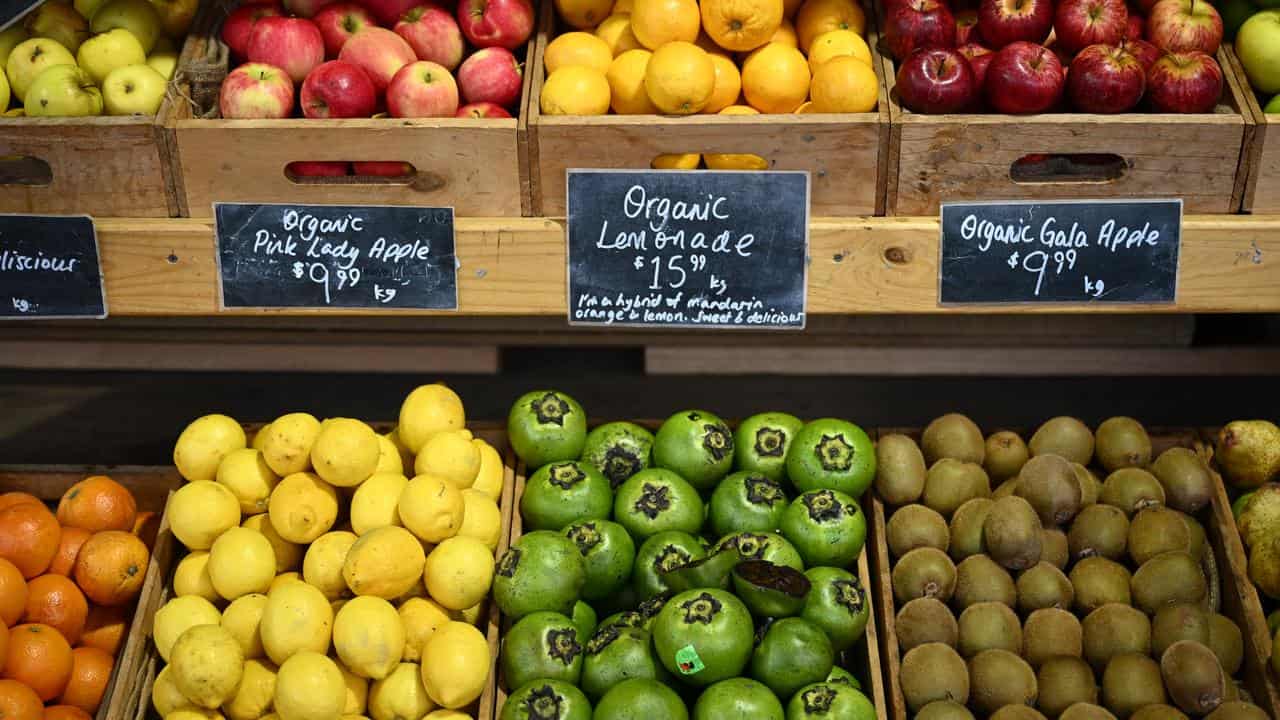
Australians are consuming fewer fruit and vegetables and drinking less milk, according to the Australian Bureau of Statistics.
But they're also tucking into more chips and chocolate and convenience foods such as pizzas.
People consumed less of all the major food groups in 2022\23, with vegetables dropping the most at 14 grams per person a day, followed closely by fruit and milk products.
On average Australians ate 186g of vegetables a day in 2022\23, down from 200g the previous year.
“We also went from eating 150 grams of fruit to 138 grams a day ... while milk products fell from 278 to 267 to grams,” the bureau's health statistics spokesperson Paul Atyeo said.
Chicken dishes such as nuggets were up slightly, while the consumption of processed meats was down.
The number of non-alcoholic drinks being sold including soft drinks were also down, as were sugar-sweetened beverages.
The ABS data shows energy and sports drink sales are up more than three per cent, while bottled water has also increased slightly on the previous year, up 1.6 per cent.
Eating habits have changed in the past five years, with Australians consuming more packet chips, chocolates and convenience meals than they did before.
“Many of the foods that dropped during 2022/23 are part of longer-term trends. We’re consuming between five and eight per cent less cow’s milk, bread and fruit juice per person compared to 2018/19,” Mr Atyeo said.
Since 2018, potato chip sales are up 16 per cent, while chocolate is up 10 per cent and cereals and convenience meals such as pizza, pasta and sushi are up nine per cent.
Readily available processed foods is partly to blame for our unhealthy choices according to health advocates.
"It’s impossible to escape seeing unhealthy foods promoted over healthy food options in supermarket aisles and checkouts," Jane Martin from the Food for Health Alliance said.
“Australians want to be healthy, but food manufacturers make this harder by surrounding us with heavily promoted, readily accessible ultra-processed foods like chips, chocolate and snacks."
The cost of living crunch is also biting into the amount Australians spend on food, with consumers buying almost four per cent less food in 2022/23 compared with the previous year.
The bureau says its data is based on the amount of food and non-alcoholic beverages purchased from the food retail sector and does not measure actual consumption.









